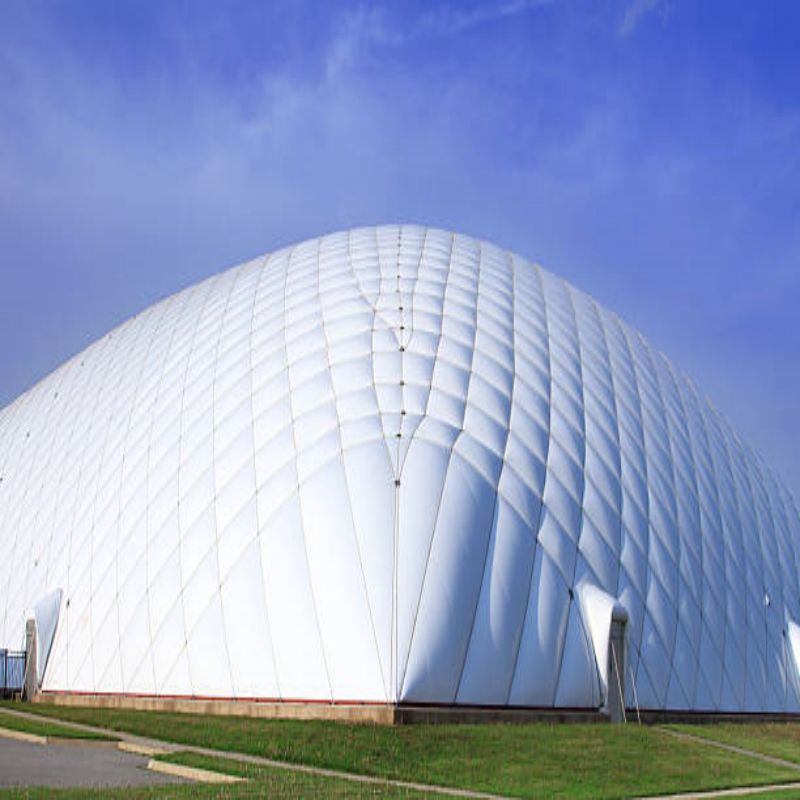Bubble Courts 101: Everything You Need to Know
Introduction
Have you ever wondered what exactly bubble courts are and how they work? In this article, we will provide you with a comprehensive guide to bubble courts, covering everything from their purpose and construction to their benefits and limitations. Whether you are a sports enthusiast or just curious about this unique concept, read on to discover all you need to know about bubble courts.
1. What are Bubble Courts?
Bubble courts are temporary sports facilities that are constructed using air-supported structures. These structures, also known as bubbles, are made of high-strength fabric and are inflated to create a dome-like enclosure that can be used for a variety of sports activities, such as tennis, basketball, soccer, and more. Bubble courts provide a controlled environment, protecting players from weather conditions and allowing sports to be played year-round.
2. The Construction Process
Building a bubble court involves several steps. First, a flat surface is prepared, which could be a tennis court or an open area suitable for the desired sport. Next, the bubble's fabric is laid out and connected to an air supply system. As air is pumped into the structure, it gradually inflates and takes on its dome-like shape. Once fully inflated, the bubble is secured to the ground using anchoring systems. Finally, the court's specific features, such as lighting and flooring, are installed to make it ready for play.
3. Benefits of Bubble Courts
Bubble courts offer numerous advantages for both players and facility owners. Firstly, they provide year-round access to sports activities, regardless of the weather conditions outside. This allows players to continue training and competing even during the winter months or in areas with extreme weather. Additionally, bubble courts can be easily assembled and disassembled, making them a flexible solution for temporary sporting events or areas with limited space.
4. Limitations of Bubble Courts
While bubble courts have many benefits, they also have a few limitations. One of the main challenges is maintaining a constant temperature inside the bubble. Extreme cold or heat outside can affect the interior temperature, requiring additional heating or cooling systems to ensure a comfortable playing environment. Additionally, bubble courts may not be suitable for sports that require large spectator areas or have specific infrastructure requirements, such as swimming pools.
5. Popular Sports Played in Bubble Courts
Several sports are commonly played in bubble courts. Tennis is one of the most popular sports, as the controlled environment allows for consistent playing conditions and protects players from rain or wind. Bubble courts are also frequently used for indoor soccer, basketball, and pickleball. The versatility of bubble courts makes them suitable for a wide range of sports, accommodating both recreational and competitive play.
6. Maintenance and Safety Considerations
Proper maintenance is crucial to ensure the longevity and safety of bubble courts. Regular inspections of the fabric, air supply system, and anchoring mechanisms are necessary to identify any potential issues. It is important to address any damage or wear and tear promptly to prevent further damage and ensure the safety of players. Additionally, bubble courts should adhere to safety guidelines, including proper lighting, emergency exits, and adequate ventilation.
7. Cost and Access to Bubble Courts
The cost of building and accessing bubble courts can vary depending on factors such as size, location, and the specific sport being played. Generally, renting a bubble court is more cost-effective than constructing one from scratch, as it eliminates the initial investment and ongoing maintenance costs. Many sports facilities and clubs offer bubble court rentals, providing individuals and teams with the opportunity to enjoy the benefits of bubble courts without the long-term commitment.
8. Future Trends in Bubble Court Technology
Bubble court technology is continuously evolving, with advancements aimed at improving player experience and reducing energy consumption. Some of the future trends in bubble court technology include the integration of smart features, such as automated climate control systems, enhanced lighting options, and improved soundproofing. Additionally, the use of eco-friendly materials and energy-efficient designs is becoming increasingly important to minimize the environmental impact of bubble courts.
9. Bubble Courts in the COVID-19 Era
The COVID-19 pandemic has highlighted the importance of controlled environments for sports activities. Bubble courts gained significant attention during this time, as they provided a safe and isolated space for athletes to train and compete while minimizing the risk of virus transmission. Bubble courts became a popular solution for professional sports leagues, enabling them to continue their seasons and entertain fans worldwide.
10. Conclusion
Bubble courts have revolutionized the way sports are played by providing a controlled and flexible environment for various activities. Whether you are a professional athlete, a recreational player, or a sports facility owner, understanding the ins and outs of bubble courts is essential. From their construction process and benefits to their limitations and future trends, this article has covered everything you need to know about bubble courts.

